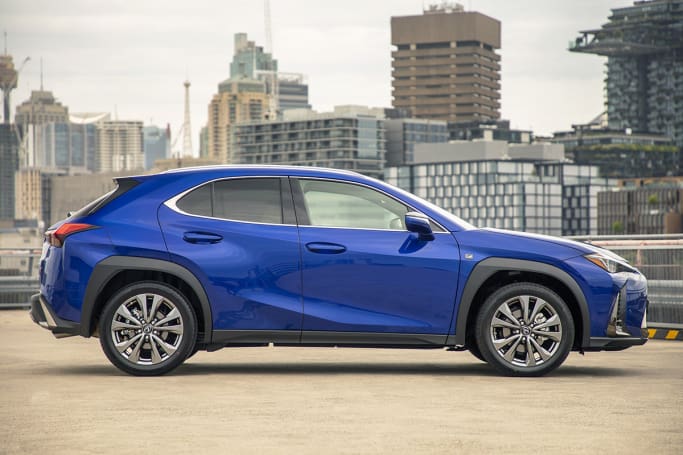Unlike with some manufacturers, you're not going to be overwhelmed by choice when picking your UX. There are just two engines across three trims on offer.
The range starts with the Luxury trim (a fetching name for the entry-level model, no?), which will cost you $44,450 for the 2WD petrol and $47,950 for the 2WD hybrid. That money buys you 17-inch alloy wheels, LED headlights and fog lights, faux-leather seats and trim, a nav-equipped 10.3-inch infotainment screen and an eight-speaker stereo as standard. There is STILL no Apple CarPlay or Android Auto, but Lexus promises it will arrive at some point this year.
The range then splits in two, with the Sports Luxury on one side and an equally pegged F-Sport on the other, part of what the brand calls its "Y" strategy.

The Sports Luxury price range stretches from $53,000 to $61,450, and the list of features is impressive. Things like 19-inch alloys, acoustic glass and real leather trim on the seats appear, and a moonroof (not a sunroof) is available as part of an enhancement pack. The F Sport ($53,450 - $61,000) nabs you a more performance-focused flavour, with adaptive suspension, five drive modes (Eco, Normal, Sport, Sport+, Custom) and a sportier exterior design, albeit with smaller, 18-inch alloys.
How much performance or luxury means to you should determine which of the upper-trim cars you go for, Sports Luxury vs F Sport.
The Luxury and Sports Luxury cars are available in the colors Sonic Quartz (white), Mercury Grey, Premium Silver, Titanium (dark grey), Onyx (black), Graphite Black (even more black), Caliente (red), Khaki Metal (deep green), and Celestial Blue, while the F Sport cars add White Nova, Carnelian (metallic red), and Cobalt Mica (metallic blue) to the list. There's no orange anywhere in the list, happily.

















